Architects: Showcase your next project through Architizer and sign up for our inspirational newsletter.
It’s no secret that architects love glass. From the early windows of Ancient Rome, to the spectacular stained glass of Gothic cathedrals, to the glass curtain walls of the past century; architects have long been fascinated by its ability to flood spaces with natural light and connect interiors with the outside world. But, as technology advanced, more façades were constructed with more and more glass. As a result, today, most of our skylines consist of ubiquitous and uninspiring glass boxes. However, all of that is about to change.
Glass is not the delicate, inflexible material that it used to be. Improvements in the manufacturing process have made it stronger, purer and thinner than ever before. These high-strength sheets can be shaped by machines, in specialized furnaces or on site, without breaking; enabling architects to create sculptural glass buildings. These undulant façades prove that curved glass is the wave of the future.
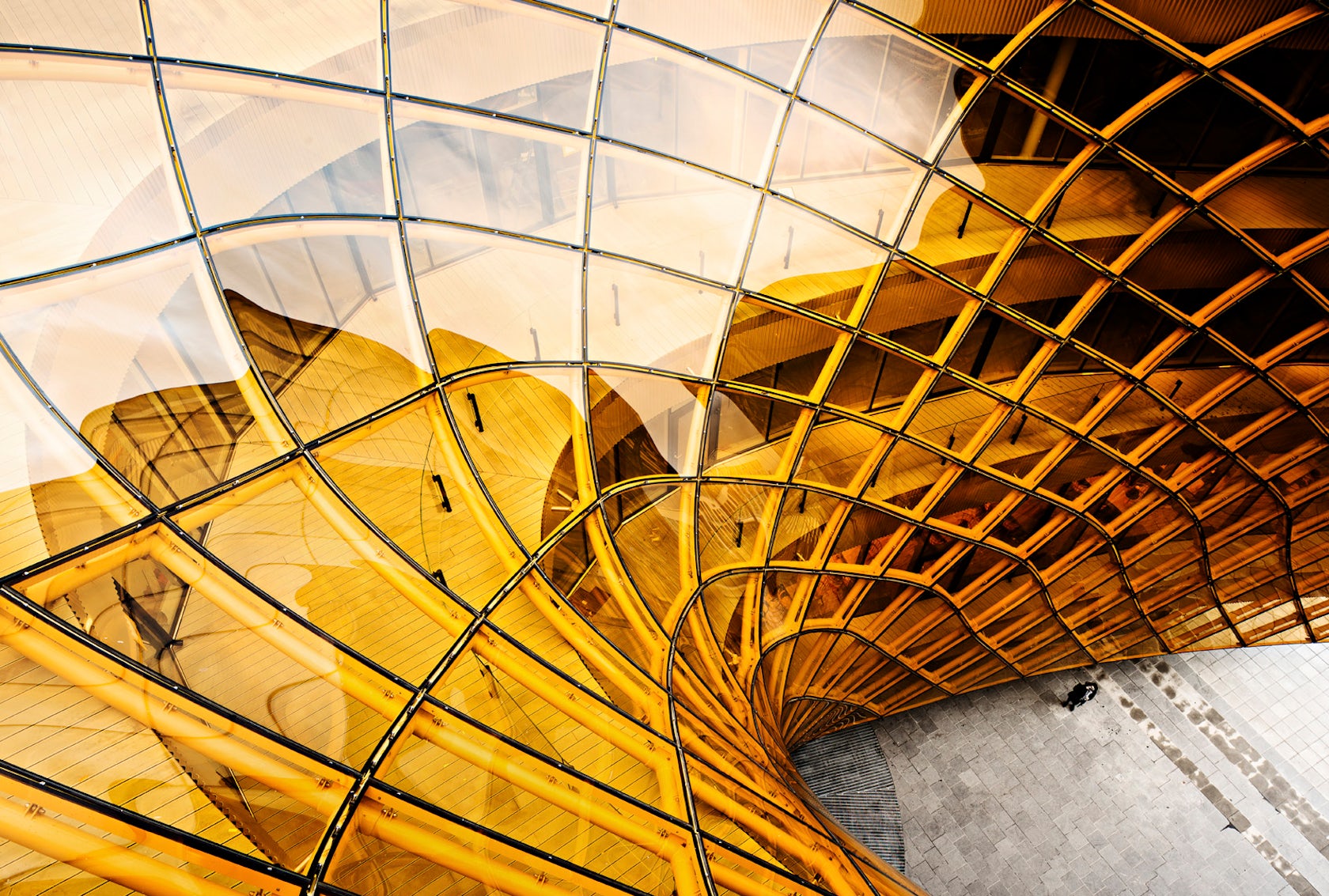
Emporia by Wingårdh Arkitektkontor AB, Malmö, Sweden
Glazing by CRICURSA and Vanceva
Emporia is a massive shopping center in Malmö, built as part of a masterplan to revitalize the city with a mix of commercial, office and residential projects. The sculptural façades, clad in gold-colored glazing, were specifically designed to lure in customers from the nearby plaza, but achieving this effect was not an easy feat.
The complicated geometry required that each of the 815 pieces of curved glass be individually cast, using 567 unique molds. These pieces were manufactured by CRICURSA, a company specializing in glass annealing, which involves heating the glass in special kilns and allowing it to cool slowly. This technique helped shaped the glass into complex curves without the formation of mold marks. The amber color was produced by laminating Vanceva color interlays between the glass sheets, creating a vibrant color effect without diminishing their transparency.



Photos by Danica O. Kus
Fondation Louis Vuitton by Gehry Partners, Paris, France
Glazing by DuPont and Sunglass
Fondation Louis Vuitton is an art museum and culture center, situated on the edge of Paris’ Jardin d’Acclimatation. The building, inspired 19th century garden architecture, is enveloped in billowing “glass sails” which, according to the architects, “give Fondation Louis Vuitton its transparency and sense of movement, while allowing the building to reflect the water, woods and garden and continually change with the light.”
The curvaceous canopy is composed of twelve “sails,” comprising 3,600 panels of double curved glass, each of which had to be individually shaped. To prevent breakage during the bending process, the architects selected SentryGlas, a high-strength tempered glass manufactured by DuPoint. The glass sheets were curved by Sunglass in custom robotic bending ovens, automated by parametric modeling software. The surfaces were then fritted and joined together with Dow Corning structural silicone, giving the glazing its continuous and milky appearance.



Photos by Thomas Schielke
Elbphilharmonie by Herzog & de Meuron, Hamburg, Germany
Glazing by Gartner and Guardian Glass
The Elbphilharmonie, Hamburg’s new concert hall and cultural center, sits atop a historic brick warehouse at the edge of the harbor, like an elegant glass crown. The peaked roofline and rippling, blue glazing echo the waves below. U-shaped openings in the façade, reminiscent of tuning forks, create small balconies with panoramic views of the water.
The wavy façade, comprising 1,100 panes of curved glass, was manufactured in collaboration with Gartner and Guardian Glass. The glass was custom fabricated in bending furnaces which exceeded temperatures of 1,000 degrees Fahrenheit. Each pane was fritted with a unique pattern of mirrored chrome dots by AGC Interpane, creating a stunning façade that shimmers in the sunlight, prevents solar gain and preserves views of the harbor. Manufacturing the one-and-a-quarter-ton panes of glass was the first challenge, installing them was another. This was made easier by embedding Radio Frequency Identification (RFID) chips into each unit which told contractors precisely where in the façade they were to be placed.

Manufacturing the glass for Vakko Fashion Center; images via designboom courtesy REX
Vakko Fashion Center by REX, Istanbul, Turkey
Glazing by LamGlass
The new headquarters of Vakko, Turkey’s premier fashion brand, is an adaptive reuse of an abandoned concrete structure. Rather than hide this existing frame, the architects chose to celebrate it; cladding its exterior in paper-thin sheets of clear glass. This enabled the display of both the structure and Vakko’s latest products. In contrast to these open showroom façades, the main offices are housed above the original building in a mirrored glass addition.
To ensure that the new façade was kept as minimal as possible, the clear glass was curved, as the architects explain: “by slumping a structural ‘X’ into each pane, the glass’s strength is increased, its need for perimeter mullions is eliminated and its thickness is reduced.” This glazing, only three-sixteenths of an inch thick, was manufactured for the project by LamGlass. Each 5-foot by 10-foot sheet was repeatedly heated and cooled, falling under its own weight into a ceramic mold. The X-pattern causes the showroom façades to undulate subtly, as if wrapped in a futuristic, transparent fabric.
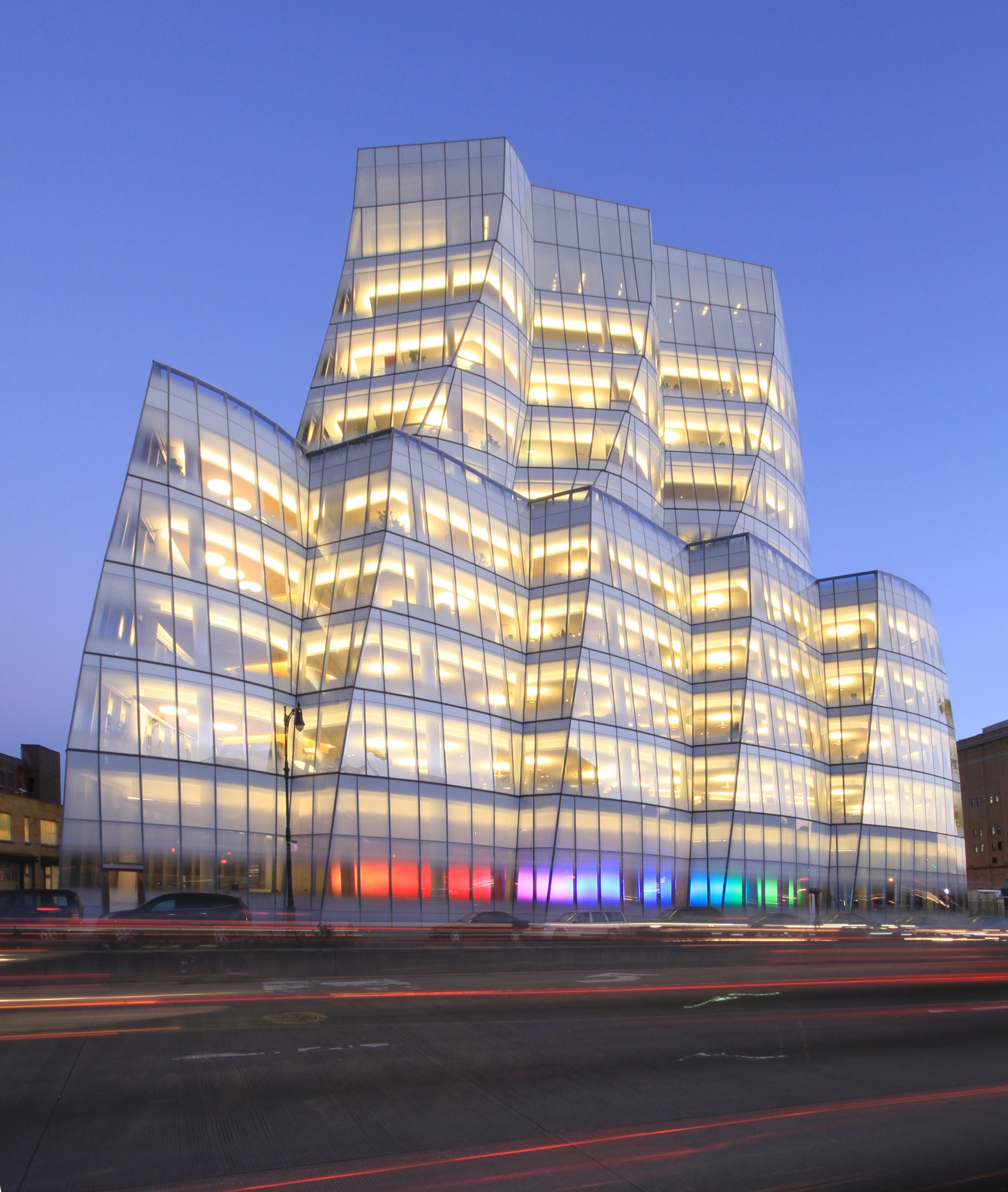
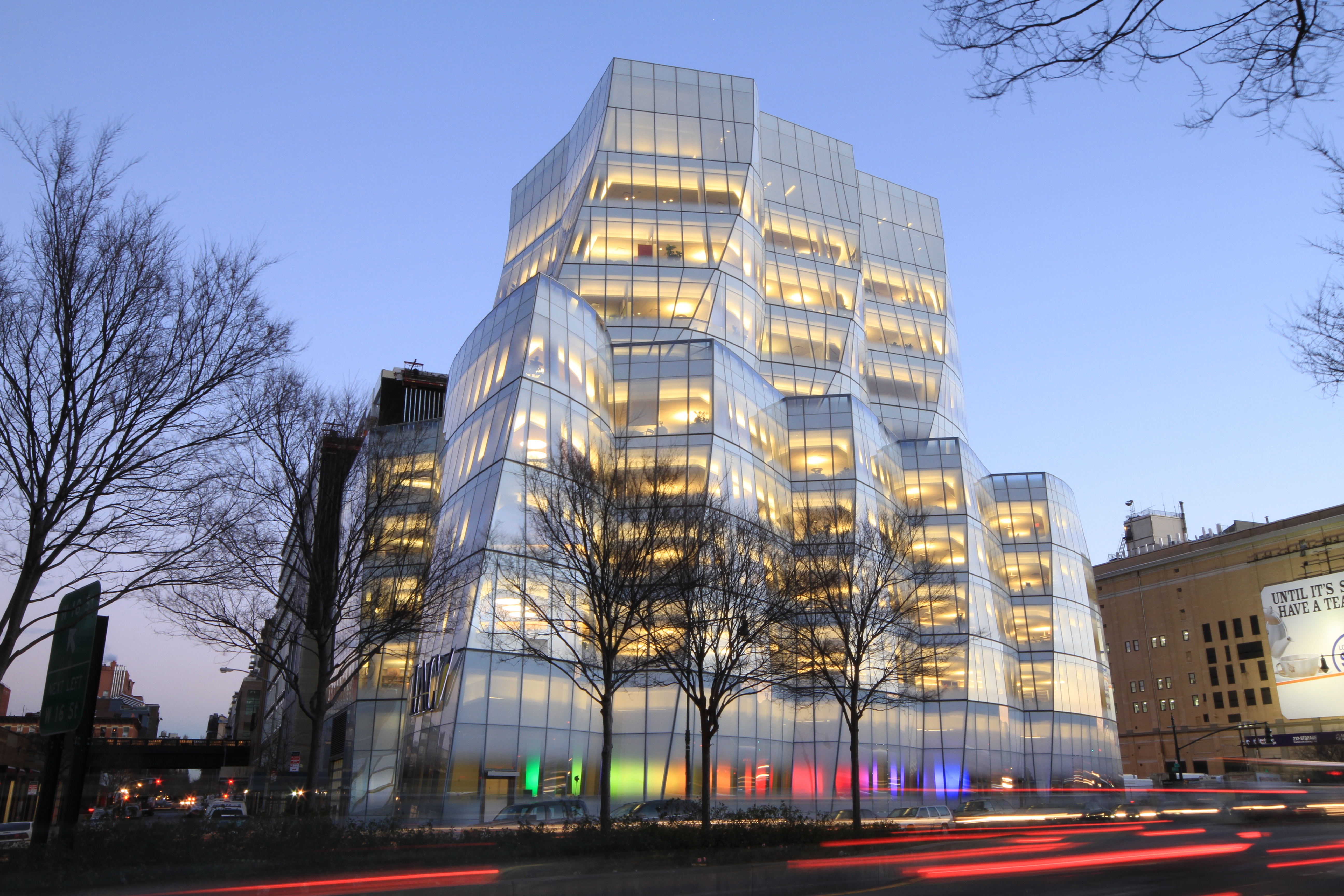
Photos by Drew Dies
IAC Building by Gehry Partners, New York City, N.Y., United States
Glazing by Permasteelisa
The headquarters of InterActive Corp. is located on a prominent site in Lower Manhattan, across from Chelsea Piers and adjacent to The High Line. Clad in white-fritted panels of curved glass, the building appears as if it has been chiseled from an iceberg floating in the city. This was Gehry Partners’ first building in New York and the first glass curtain wall in the world to be constructed using cold-bending techniques.
Unlike the other projects in this collection, the glass for the IAC Building was shipped flat and curved directly on site, without heat. These 1,349 double glazed, laminated glass panels were progressively bent over curved aluminum frames and fixed in place once they reached the desired shape. This resulted in significant cost savings as no furnaces, expensive molds or long-lead times were required. This will also make it easier to recycle the glass at the end of the building’s life because, unlike hot-bending, cold-bending is not permanent — when the aluminum frames are removed, the curved glass will naturally straighten out.
Architects: Showcase your next project through Architizer and sign up for our inspirational newsletter.
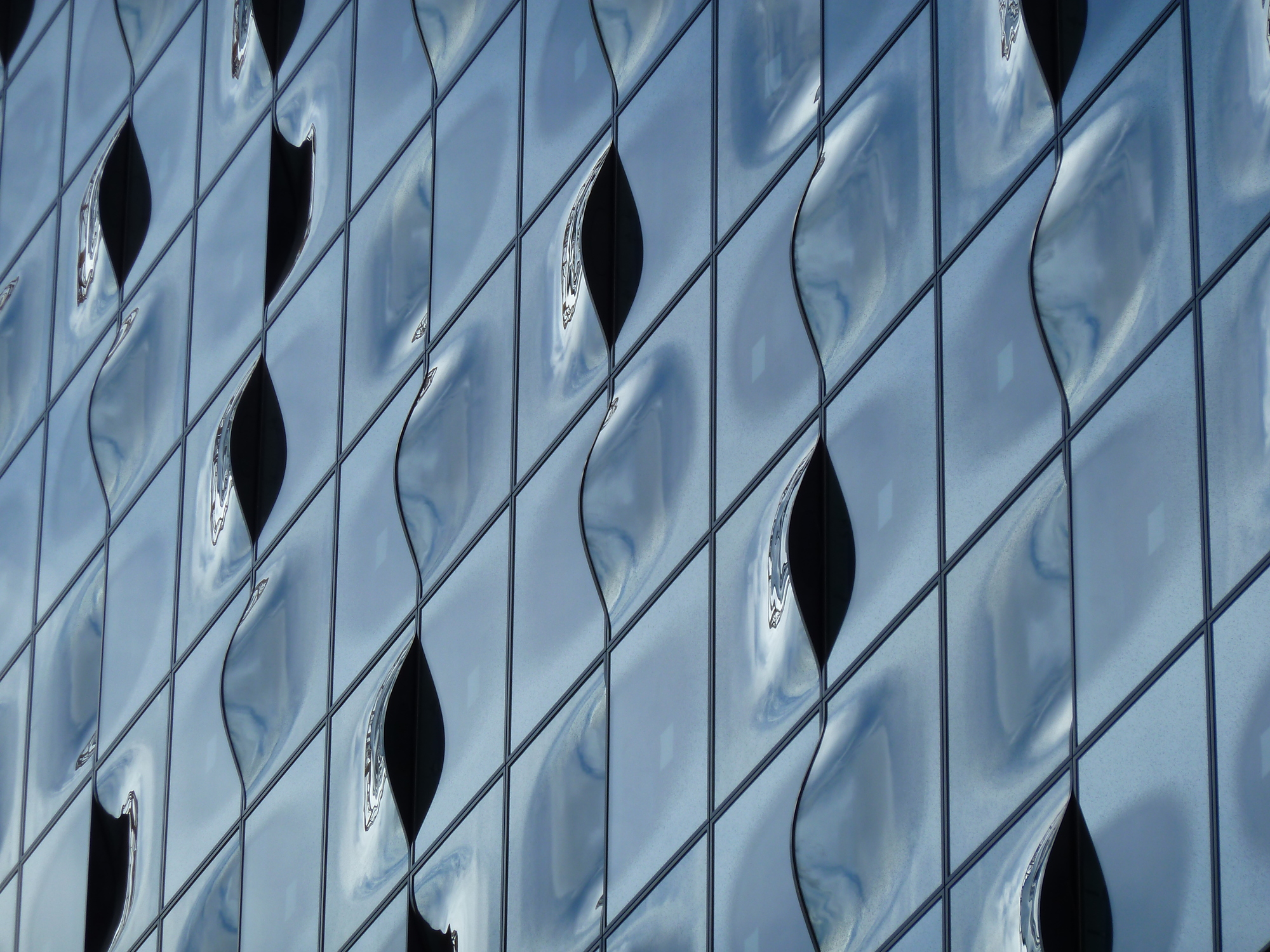

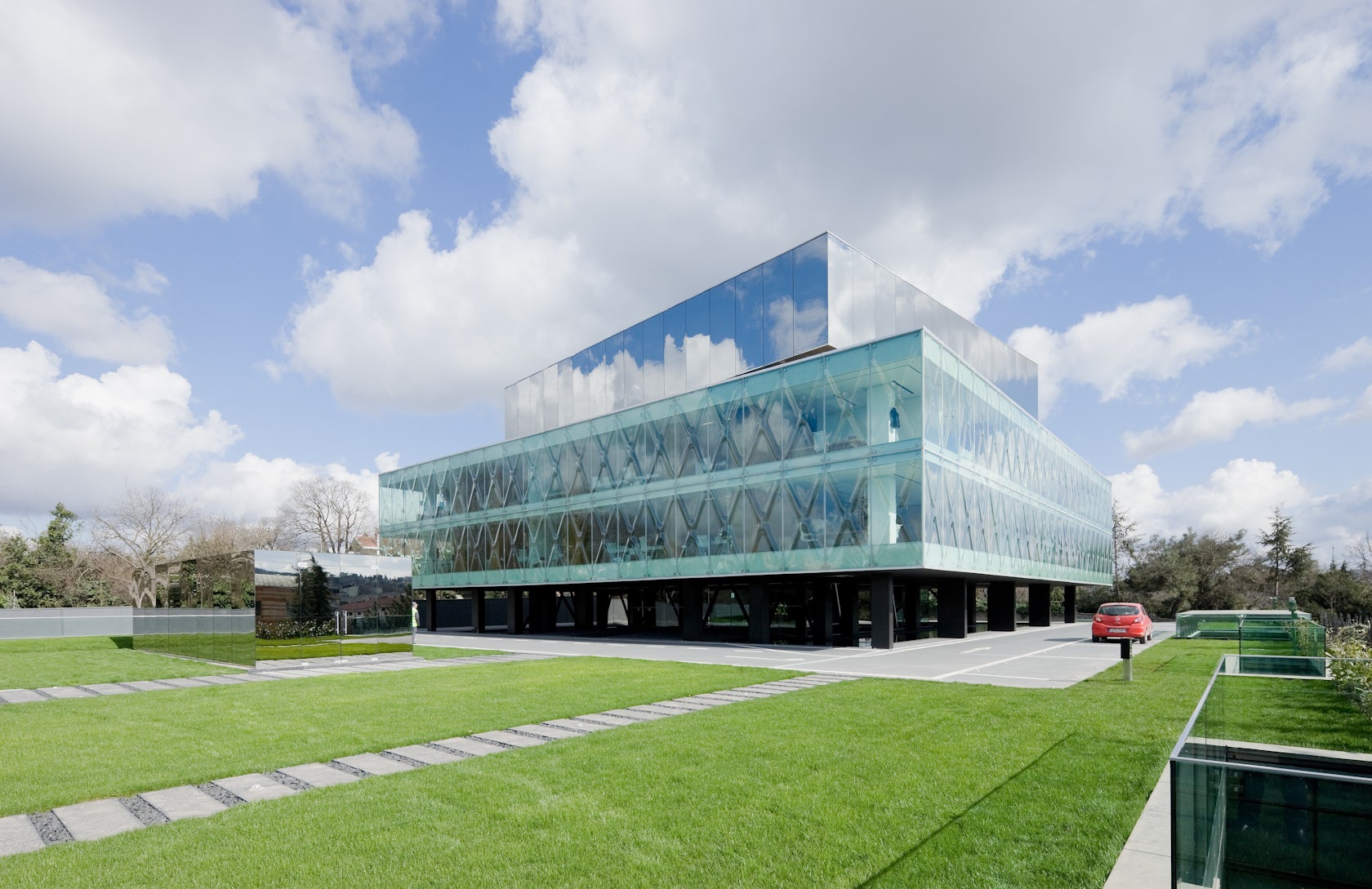
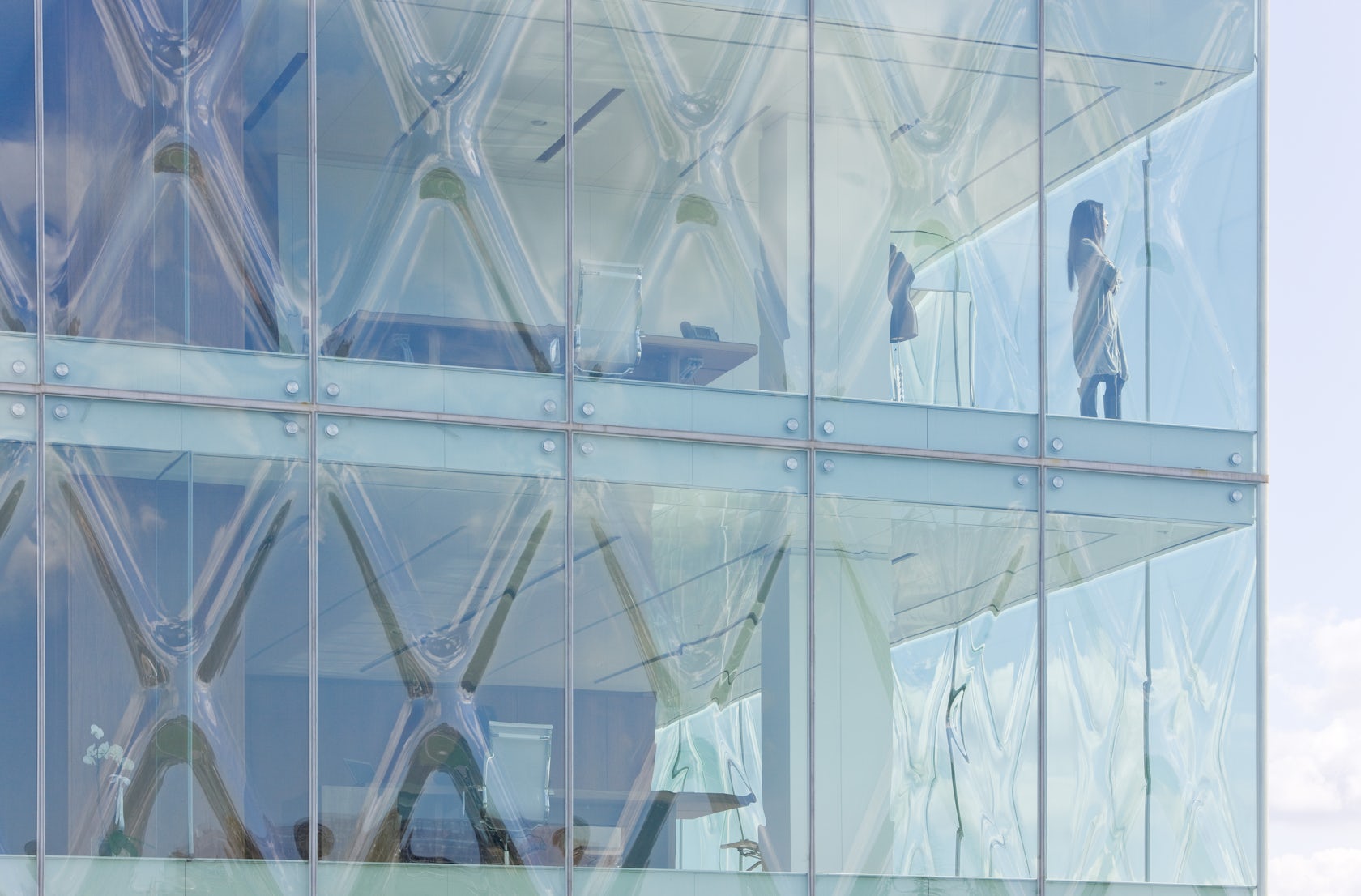




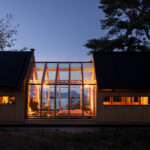
 Emporia
Emporia  Fondation Louis Vuitton
Fondation Louis Vuitton  Vakko Fashion Center
Vakko Fashion Center 


